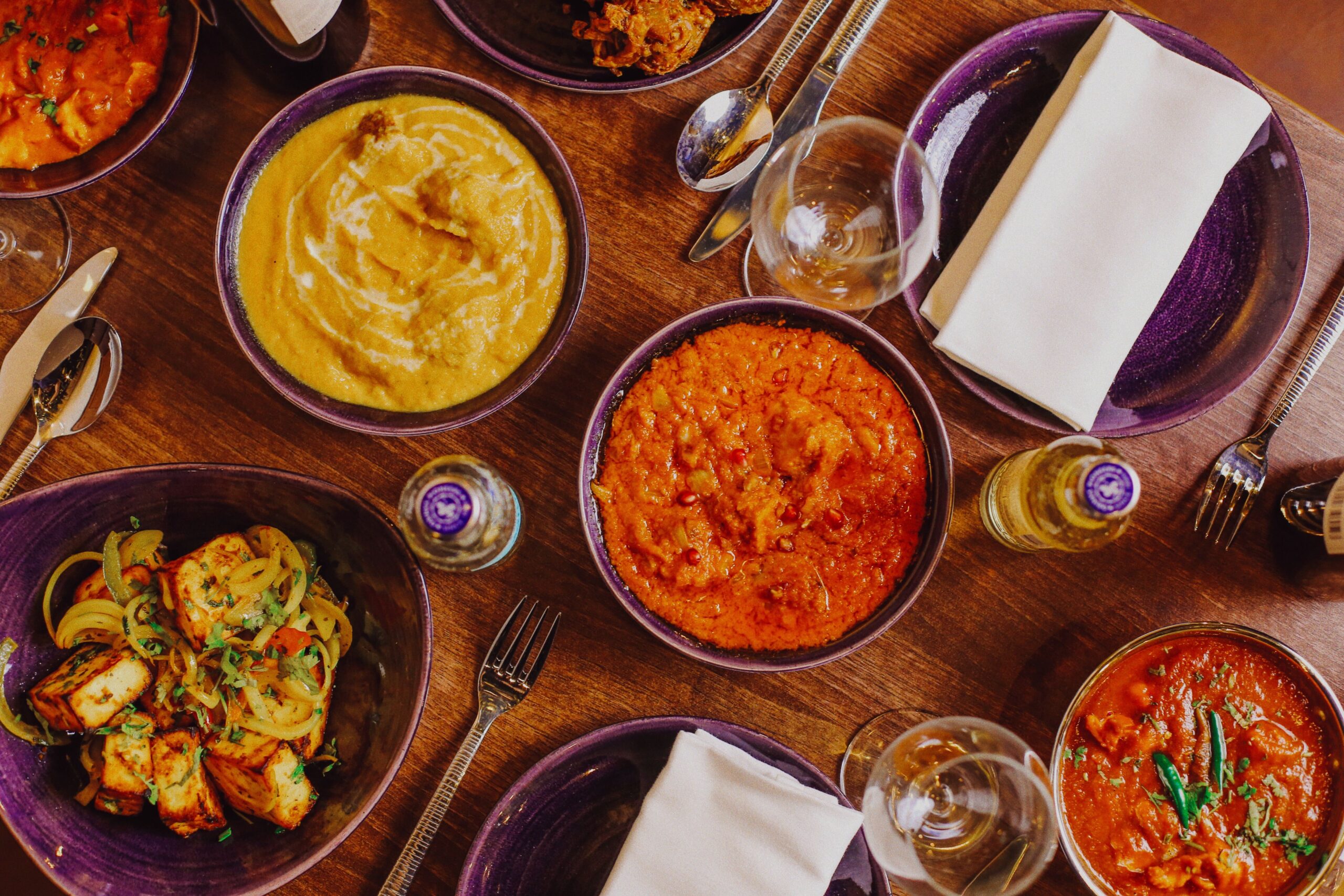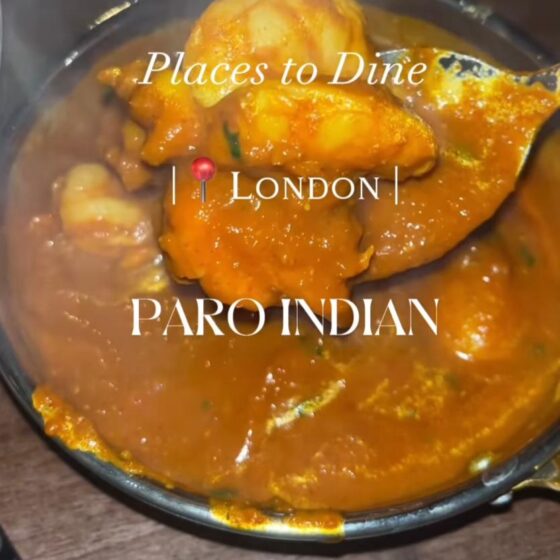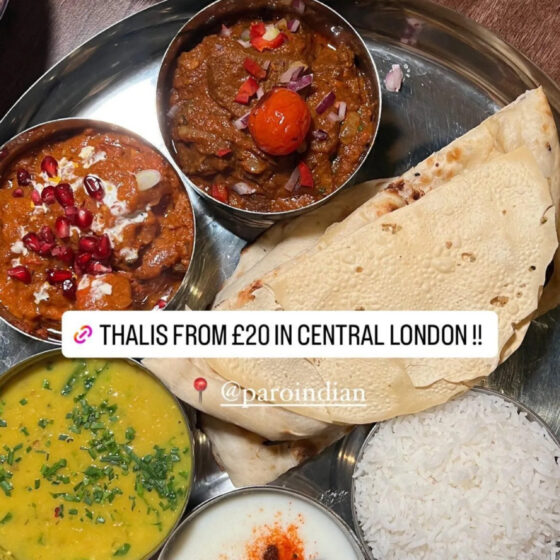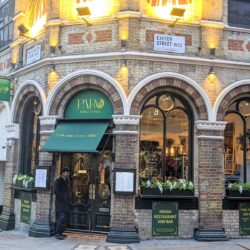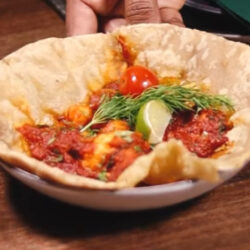Indian spices and British plates are the perfect mix. This fusion blends centuries of history with bold, modern flavour. It began with trade and travel, then grew into a shared love for spice and comfort.
Indian spices have permanently transformed British cuisine. Centuries ago traders brought their cuisine from India. Now has grown into a strong, enduring friendship.
chicken tikka changed to chicken tikka masala and so on with other curries. Now chef use I indian spices as common spoice but not as foreign spice.
It’s more than simply food. It is a combination of evolution, history, and culture.
So, let’s explore how Indian spices entered British cuisine in more detail and discover why the combination is so effective.
A Long History of Flavour Exchange
The beginning of this tale is trade. When British traders travelled to India centuries ago, they found cloves, cardamom, turmeric, and pepper. In Europe, these spices were uncommon, but they soon gained value. Curiosity, however, increased along with trade. British chefs learnt Indian cooking methods in addition to using Indian spices. The British kitchen gradually began to merge in Indian cuisine.
The word “curry” was already well-known in British homes by the 18th and 19th centuries. Cookbooks from India were being translated. Chefs in Britain were experimenting. And the shelves of spices started to fill up.
The Curry House Revolution
The 20th century saw the biggest change. Large numbers of immigrants from Bangladesh and India brought with them family cooking methods, regional cuisines, and traditional spice blends. Indian curry restaurants quickly sprung up all throughout the United Kingdom, particularly in Bradford, Birmingham, and London. These eateries brought in a whole culture in addition to food.
Indian food has entered British culture by the 1990s.
Indian Spices That Now Define British Tastes
Words like garam masala, fenugreek, cumin, and coriander became commonplace. People in Britain started to crave foods like chicken tikka masala. Saag Paneer, Onion Bhaji, Vegetable Jalfrezi, and Lamb Rogan Josh
Now let’s discuss the spices themselves. The following important Indian spices have influenced British cooking:
Cumin:
warm and earthy. used in roast veggies, stews, and curries.
• Turmeric:
A vibrant yellow spice with many health advantages. found in fusion sauces, rice, and soups.
Chilli powder:
Provides depth and heat. become typical in household kitchens and stores in Britain.
• Garam Masala:
A mixture of black pepper, cloves, cardamom, and cinnamon. utilised nowadays in soups, sauces, and marinades.
• Fenugreek:
Offers depth and sweetness. used in a lot of curry recipes that are British-Indian.
These spices are not just used to flavour meals. They alter the texture of food. They provide contentment, warmth, and richness.
To sample Indian spices nowadays, you don’t need to go to a curry restaurant. Indian spices are now used by British cooks in seafood dishes, pies, burgers, and desserts. Modern eateries serve cardamom chocolate mousse, masala fried chicken, and tandoori lamb tacos.
These days, even Sunday roasts include cumin-infused sauce or turmeric-roasted potatoes. Dishes that feel both familiar and fresh are produced by this mixing of cultures. While it honours tradition, it doesn’t hesitate to try new things.
Additionally, it proves that Indian spices blend well with British cuisine.
Home Cooking Has Transformed Too
The shift is not limited to dining establishments. Spices from India are becoming classics in British home kitchens. Dal is prepared on weeknights by families. In soups, they add garam masala. Tikka marinades are used for barbecuing. The supermarkets have reacted. Every store has frozen samosas, spice blends, and premade curry pastes.
Why This Blend Works So Well
Indian spices are a great addition to British cuisine for a reason.
1. Flavour Complexity:
Indian spices have a variety of flavours. Even the most basic foods gain richness from their presence.
2. Warm Comfort:
Heartiness is a key component of British cooking. Indian cuisine does just that, but with more energy.
3. Versatility:
You can use Indian spices on meat, fish, veggies, and even desserts.
4. Love of dinners:
Family dinners are important in all cultures. Indian cuisine looks great in the setting.
Enter Paro Indian Covent Garden
Although the entire UK is covered in this tale. One location, Paro Indian Covent Garden best represents this blend. Paro, which is situated in the centre of London’s theatrical area, combines Indian customs with sophisticated British tables. Their chefs carefully employ real Indian spices. Despite their heritage in cooking, they serve in a modern way that suits the London setting.
Dishes like:
Nani Jaan Chicken
Soft chicken cooked with spices and yoghurt. Loved in best Indian restaurants in Covent garden, this meal is cosy and delicious.
Chicken Shashlik Tandoori Dust:
Chicken on the grill with tandoori peppers and spices. One of London’s best tandoori dishes, it’s a hot hit.
Butter Chicken:
Paro Smooth, creamy, and flavourful. A popular Indian dish close to Covent Garden is this traditional curry.
Dum Dum Duck Masala:
Dum Dum Duck fried in a strong, hot masala. An fantastic option for London’s Indian duck curry enthusiasts.
Vegetable Samosa:
spicy vegetable filling in a crispy pastry. A popular Covent Garden vegetarian Indian appetiser.
Final Thoughts: A Delicious Exchange
Indian spices transformed British cuisine. From high street cafés to royal kitchens, from Sunday dinners to Friday takeaway, the effect is evident and only getting stronger. Indian food is now not exclusive to the UK. They celebrate and cherish it. Restaurants like Paro Indian Covent Garden, which honour the past while preparing food for the present, are responsible for its continuous evolution. In order to enjoy Rogan Lamb at a restaurant in Covent Garden or to add turmeric to your soup at home, keep the following in mind: All spices have a backstory. And each meal creates a bridge.

